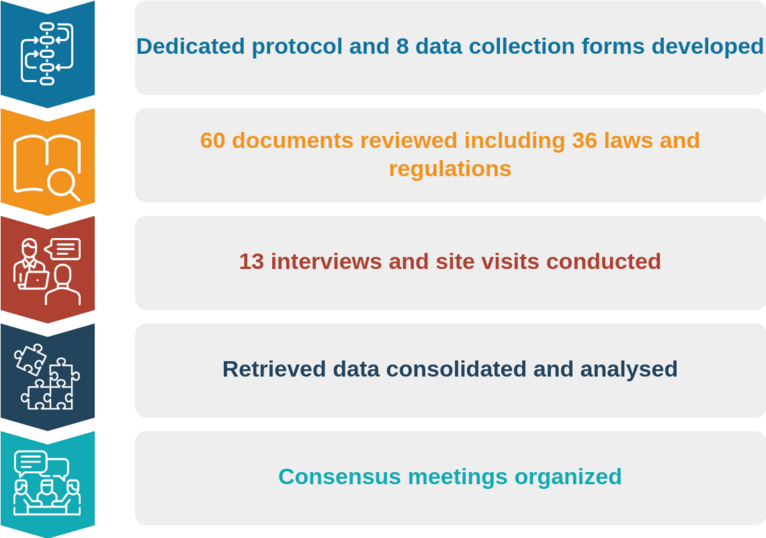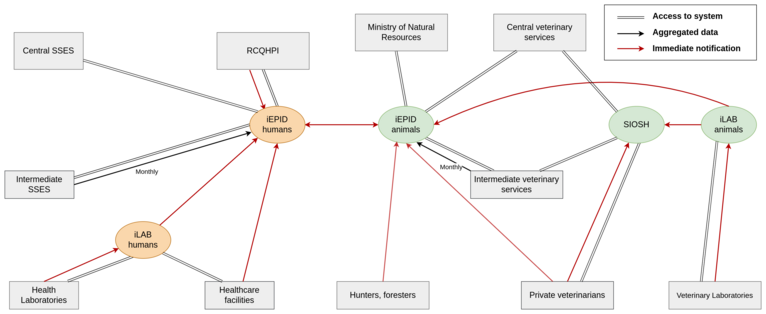One Health surveillance for zoonotic diseases
Project details
Year: 2023
Client: World Health Organization - Country Office in Kyrgyzstan
Objectives:
- Map public health surveillance and response activities of the animal health sector in Kyrgyzstan, including existing information systems and coordination with the human health sector.
- Develop recommendations to strengthen collaboration between the animal and human health sectors for public health surveillance and response to zoonotic diseases in Kyrgyzstan.
Deliverables:
- Workshop
- Report and companion presentation
Performed activities
Zoonotic diseases are infectious diseases caused by pathogens that can affect both humans and animals. Public health surveillance is an essential part of tackling zoonotic diseases but cannot be effectively addressed by the human health sector alone.
To improve collaborative surveillance of zoonotic diseases in the Kyrgyz Republic, the WHO Country Office in Kyrgyzstan requested us to map surveillance and response activities in the human and animal health sectors and provide tailored recommendations.
We reviewed 60 relevant documents, performed a mission in the country with the conduct of 13 interviews and site visits, and conducted a series of consensus meetings and one half-day workshop with relevant stakeholders in the country.

Figure 1. Overview of the methodology used
The following results were provided:
- Mapping of the main stakeholders from the human and animal sectors involved in the surveillance and response to zoonotic diseases in the country.
- Analysis of the existing regulation.
- Description of the flow of information and electronic health information systems used.
- Challenges for collaborative surveillance and response to zoonotic diseases and detailed recommendations and activities to overcome them.
- Plan to integrate existing electronic systems across sectors in the country.

Figure 1. Expected flow of information related to zoonotic diseases if recommendations to integrate electronic systems are implemented
